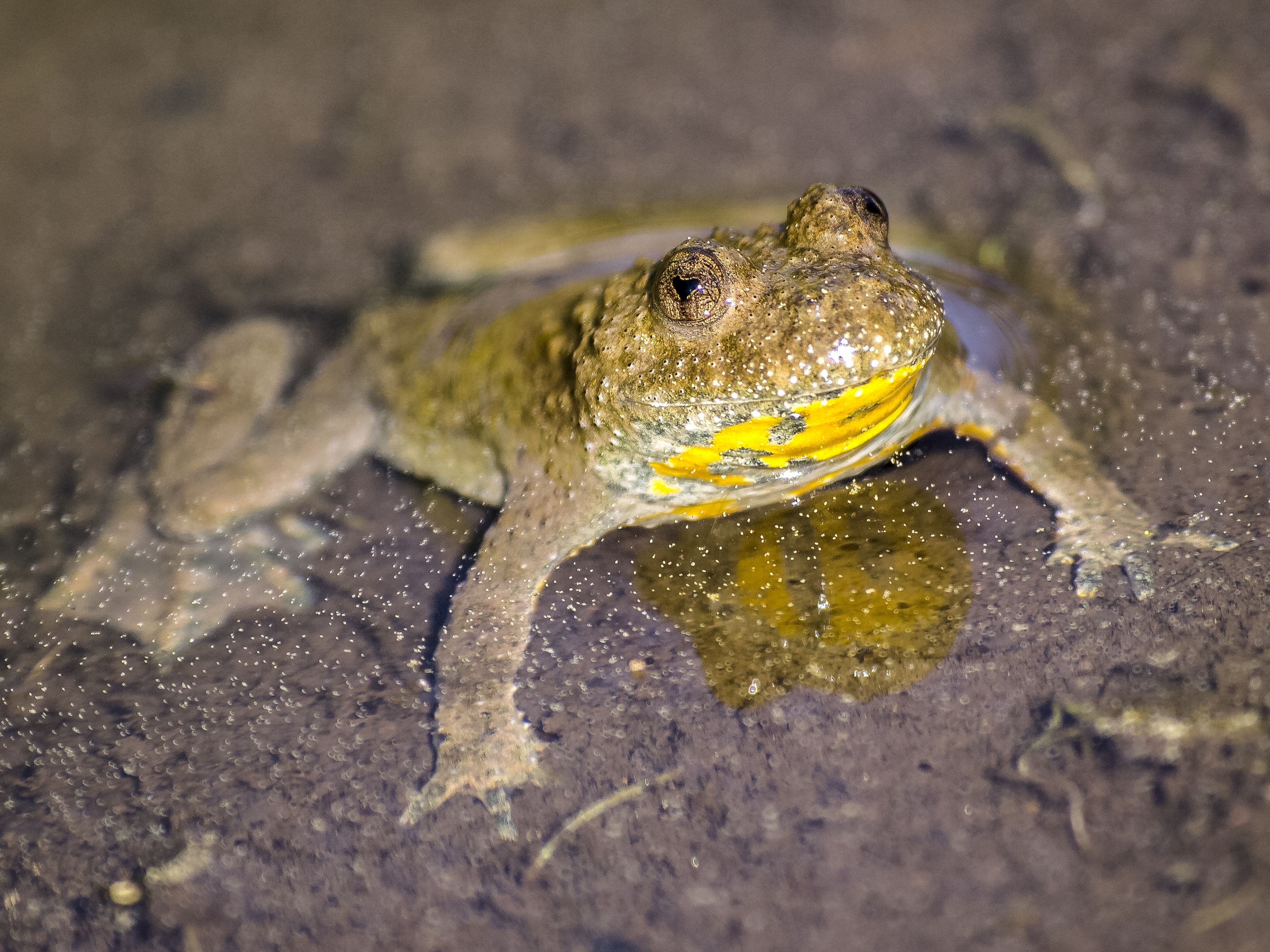A striking yellow spots pattern on the underside and heart-shaped pupils are the hallmarks of the Yellow-bellied toad.
Description
The size of the males and females is between 35 and 56 millimetres. The dorsal side is clay to grey-brown, with narrow darker glandular complexes and blurred light spots sometimes visible in the nape area. The underside, including the insides of the limbs and the fingers and toes, is intensely light yellow to orange in colour and interspersed with lead-grey to black spots or areas.
Habitat
The Yellow-bellied toad is an amphibian closely associated with water. In the past, the species was a typical inhabitant of stream and river floodplains. There, it colonised the temporary small bodies of water that constantly emerged depending on the floodplain dynamics. Even in its human-modified substitute biotopes, it prefers temporary small and very small waterbodies on clayey ground, such as tractor tracks, puddles and small ditches. These are usually sparsely vegetated and free of competing species and predators.
Call
The mating calls of the males consist of regular, melodic "uuh..uuh..uuh" sounds. As the Yellow-bellied toad has no throat call sacs, the calls sound relatively muffled and quiet. They can call more than 40 times per minute, which makes them distinguishable from the Fire-bellied toad, which calls less frequently and otherwise sounds very similar. Males start calling at a water temperature of 11.5 °C, the upper threshold for this is around 30 °C.
Mating call example:
Wikimedia Commons Licence Cymmothoa exigua CC BY-SA 3.0 Unported
Source: The description and distribution text is an excerpt from Wikipedia (https://de.wikipedia.org/wiki/Gelbbauchunke). The text is available there under the licence "Creative Commons Attribution/Share Alike". Status: 10 July 2023. The text on the call consists of excerpts from Wikipedia, adapted from "Die Amphibien Europas: Bestimmung, Gefährdung, Schutz" by Nöllert & Nöllert, Franckh-Kosmos Verlag 1992.

 DE
DE  EN
EN 









